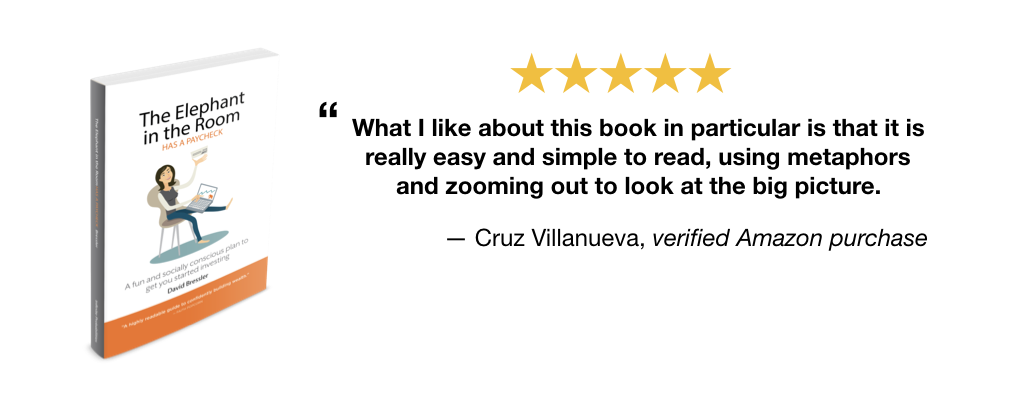When you go to a doctor’s office and they show you a scale from 0 to 10 and ask how much pain you’re in, they never ask how long you’ve been in pain.
I was interviewed for my first podcast. The Gentle Art, a week ago, and it was posted last night. While not focused on the book, we talked about the book a bit.
We opened the conversation talking about time, and I used my pain analogy to highlight how time is often missing from how we think about solutions to problems.
For example, one would imagine that a “level 3” pain that goes on for six months feels quite different than waking up in the morning with a bad headache.
Doctors aren’t the only ones who ignore time. Financial people do too.
Start Young!
Common wisdom dictates that we should start investing when we’re young. In our twenties, along with starting our first job we’re to also start saving for retirement.
Forgetting for a moment, most human’s inability to think long term over the span of a few years, let alone decades. There isn’t any measurement that rewards length of time you’ve been investing.
That’s not exactly true but talking in absolutes helps make the point that’s valid regardless. There are some metrics that incorporate time but they’re not common, in particular “yield on cost.” Yield on cost is a mouthful though. It doesn’t quite roll off the tongue and it isn’t obvious what it means. In fact, it’s almost off-putting as it sounds like it requires math to figure out.
I’ve recently lost my job (and found another). in that gap between the certainty of being employed, there was a lot of uncertainty. Nothing I could have done financially could have prevented that uncertainty if I had only started planning when the “employment event” happened (my company was acquired).
It was only because I had a discipline of investing over decades that I was financially secure enough to be casual in my job search. To allow me to pick the “best job” not the “first job” that came along.
Human Behavior Matters More than Math
That success vs the uncertainty doesn’t get measured though. In general, when it comes to investing (and probably other things as well), the time period doesn’t come into play with the metrics we track.
And why are metrics important?
Metrics are important because we are what we measure. Metrics motivate the desired behavior. I talk about this a lot in my book. In fact, if you ask me what my book is about (why is my book different than the other millions books about dividend investing) I’d respond:
The Elephant in the Room Has a Paycheck is firstly about creating a story that new investors can internalize, and then provides metrics to align actions taken to desired behavior.
For example, most advice says “don’t look at your statements.” WTF?! Seriously, I read that and hear “stay uneducated.”
Do you want to stay uneducated about money?
They tell you not to look because they promote the wrong metric (how much you have saved). You don’t want to not look — you want to look at something other than portfolio value. And, that something should be familiar so that you have a framework for understanding it and incorporating what it means into your life. (In the tech space, we call this being modular… the idea that a product can be great, but if it doesn’t fit into the customer’s life in a modular way it becomes difficult to get customer adoption.)
The Elephant’s Paycheck and Raises
In the book, I choose the dividend payout total as the main metric. It’s “modular” — meaning, understanding a “dividend paycheck” is something anyone can understand easily (anyone who works knows what a paycheck is and means to them). The challenge with that the overall paycheck can be small at first, and it’s hard to get excited by a few dollars… which means we want to look at percentages. A $2 raise, not so exciting. A 15% raise… whoa! That’s a big raise. (Want a raise every month? Who doesn’t?)
And back to my original point: how do we measure the impact of time on an investing habit? I renamed “yield on cost” to “actual yield” (to be differentiated from “current yield” which is the yield at this moment in time).
Let me share an example. I buy a share of stock that pays a 3% dividend for $10. That means is pays ¢30 a year in dividends. Lets say time goes on, and the dividend doubles to ¢60 while the stock price doubles to $20. Current yield is still 3%. But, you didn’t start with $20 (the current stock price). You started with $10. You’re receiving ¢60 on your original $10 investment. That’s 6%.
Or, said differently, if you put away $10 today… in time (if things proceed as I outline above), you’ll be earning 6% on that investment.
That’s a metric that incorporates the value of time, and rewards (emotionally) a long-term investing discipline.
I’m only partway through the podcast episode, but you should listen to the whole thing. And share it (please).
And, if I’ve got your attention, you can either buy my book or take my free email course (which covers a lot of the same stuff as the book but without the storyline).


Let me know what you think